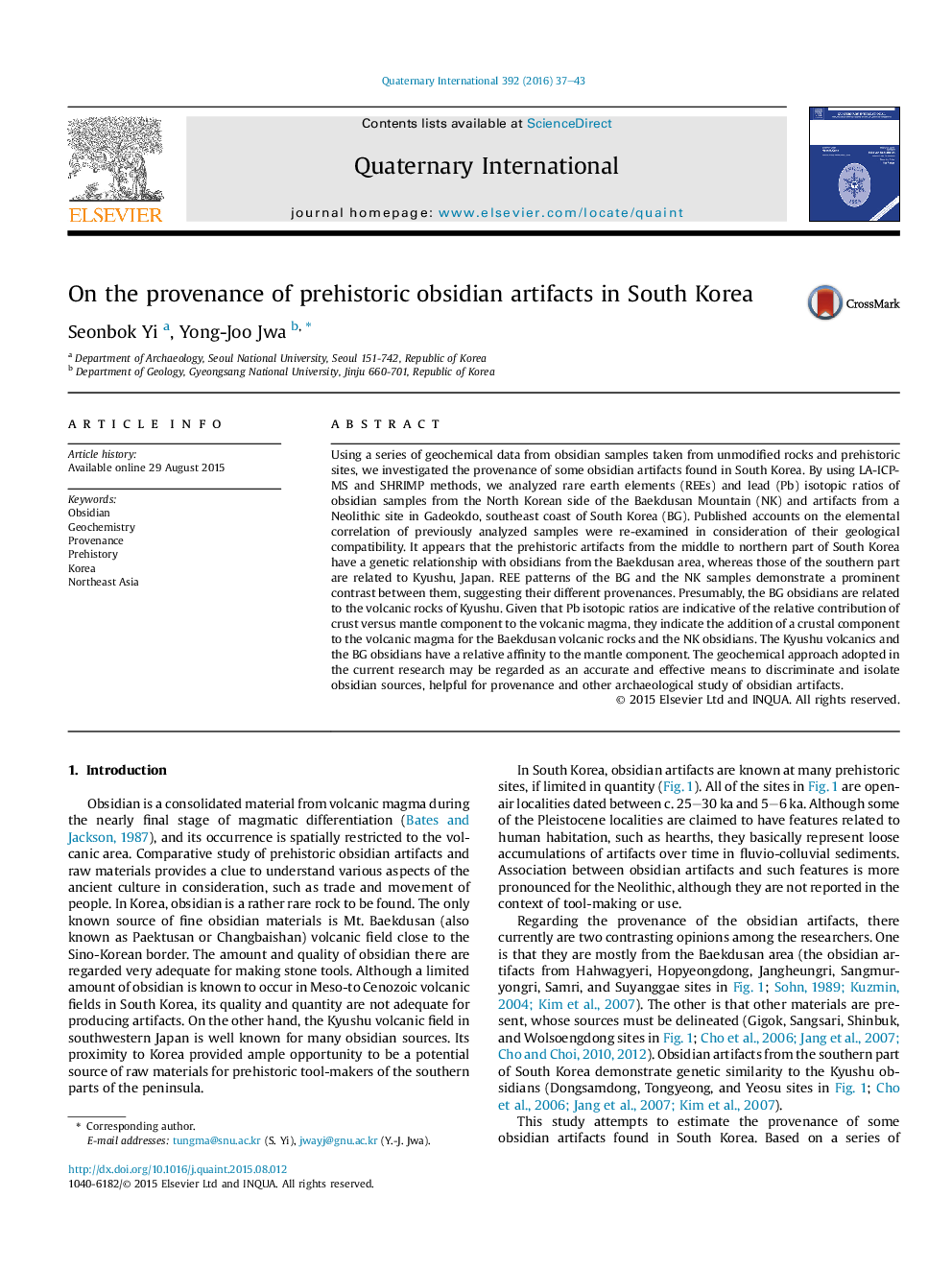| Article ID | Journal | Published Year | Pages | File Type |
|---|---|---|---|---|
| 1040384 | Quaternary International | 2016 | 7 Pages |
Abstract
Using a series of geochemical data from obsidian samples taken from unmodified rocks and prehistoric sites, we investigated the provenance of some obsidian artifacts found in South Korea. By using LA-ICP-MS and SHRIMP methods, we analyzed rare earth elements (REEs) and lead (Pb) isotopic ratios of obsidian samples from the North Korean side of the Baekdusan Mountain (NK) and artifacts from a Neolithic site in Gadeokdo, southeast coast of South Korea (BG). Published accounts on the elemental correlation of previously analyzed samples were re-examined in consideration of their geological compatibility. It appears that the prehistoric artifacts from the middle to northern part of South Korea have a genetic relationship with obsidians from the Baekdusan area, whereas those of the southern part are related to Kyushu, Japan. REE patterns of the BG and the NK samples demonstrate a prominent contrast between them, suggesting their different provenances. Presumably, the BG obsidians are related to the volcanic rocks of Kyushu. Given that Pb isotopic ratios are indicative of the relative contribution of crust versus mantle component to the volcanic magma, they indicate the addition of a crustal component to the volcanic magma for the Baekdusan volcanic rocks and the NK obsidians. The Kyushu volcanics and the BG obsidians have a relative affinity to the mantle component. The geochemical approach adopted in the current research may be regarded as an accurate and effective means to discriminate and isolate obsidian sources, helpful for provenance and other archaeological study of obsidian artifacts.
Related Topics
Physical Sciences and Engineering
Earth and Planetary Sciences
Geology
Authors
Seonbok Yi, Yong-Joo Jwa,
